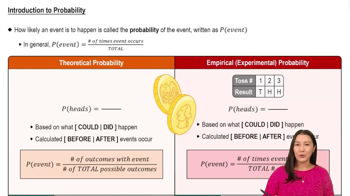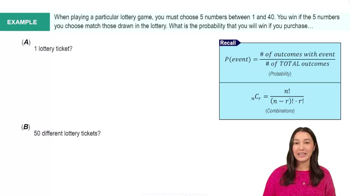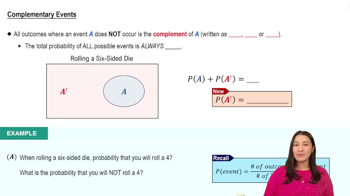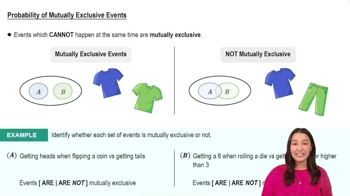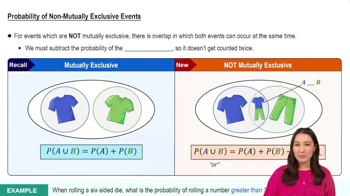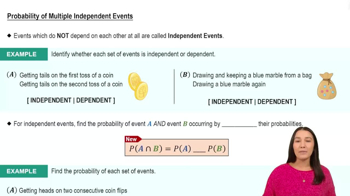Table of contents
- 0. Fundamental Concepts of Algebra3h 29m
- 1. Equations and Inequalities3h 27m
- 2. Graphs1h 43m
- 3. Functions & Graphs2h 17m
- 4. Polynomial Functions1h 54m
- 5. Rational Functions1h 23m
- 6. Exponential and Logarithmic Functions2h 28m
- 7. Measuring Angles40m
- 8. Trigonometric Functions on Right Triangles2h 5m
- 9. Unit Circle1h 19m
- 10. Graphing Trigonometric Functions1h 19m
- 11. Inverse Trigonometric Functions and Basic Trig Equations1h 41m
- 12. Trigonometric Identities 2h 34m
- 13. Non-Right Triangles1h 38m
- 14. Vectors2h 25m
- 15. Polar Equations2h 5m
- 16. Parametric Equations1h 6m
- 17. Graphing Complex Numbers1h 7m
- 18. Systems of Equations and Matrices3h 6m
- 19. Conic Sections2h 36m
- 20. Sequences, Series & Induction1h 15m
- 21. Combinatorics and Probability1h 45m
- 22. Limits & Continuity1h 49m
- 23. Intro to Derivatives & Area Under the Curve2h 9m
21. Combinatorics and Probability
Probability
Struggling with Precalculus?
Join thousands of students who trust us to help them ace their exams!Watch the first videoMultiple Choice
If a single card is randomly selected from a deck of cards, what is the probability of selecting an ace or a king?
A
0.0059
B
0.077
C
0.15
D
0.85
 Verified step by step guidance
Verified step by step guidance1
Understand that a standard deck of cards has 52 cards, consisting of 4 suits: hearts, diamonds, clubs, and spades. Each suit contains 13 cards, including one ace and one king.
Identify the total number of favorable outcomes. There are 4 aces and 4 kings in the deck, so the total number of favorable outcomes is 4 (aces) + 4 (kings) = 8.
Calculate the probability of selecting an ace or a king by dividing the number of favorable outcomes by the total number of possible outcomes. The formula for probability is: \( P(A \text{ or } K) = \frac{\text{Number of favorable outcomes}}{\text{Total number of possible outcomes}} \).
Substitute the known values into the probability formula: \( P(A \text{ or } K) = \frac{8}{52} \).
Simplify the fraction \( \frac{8}{52} \) to its simplest form to find the probability of selecting an ace or a king.

 5:37m
5:37mWatch next
Master Introduction to Probability with a bite sized video explanation from Patrick
Start learningRelated Videos
Related Practice

